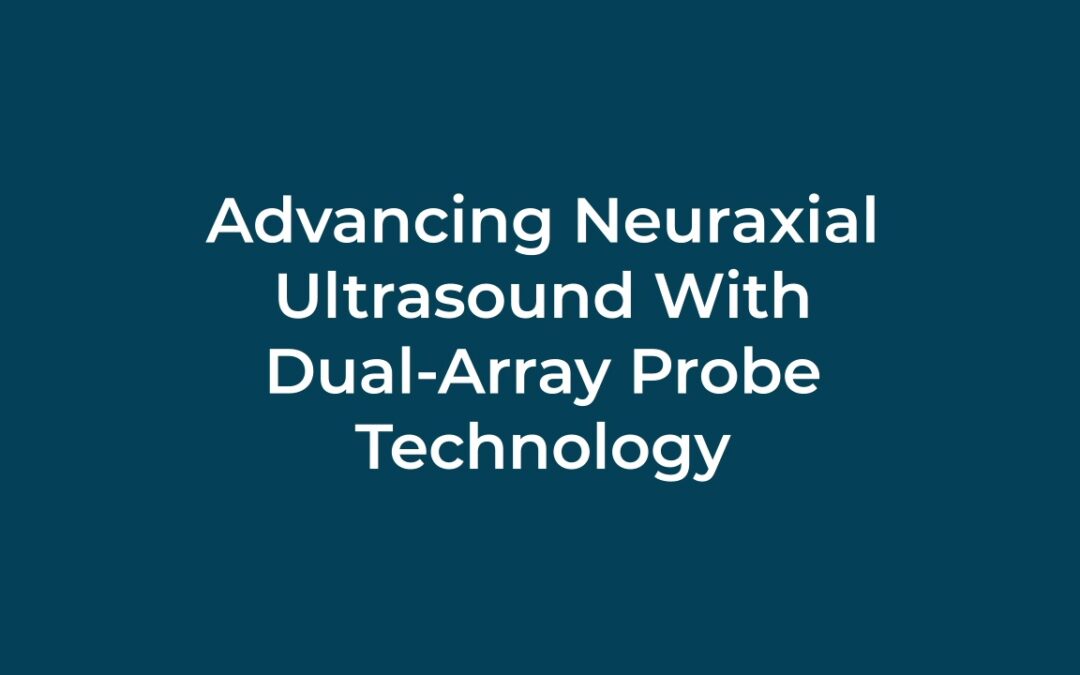In spinal anesthesia, precision isn’t optional — it’s foundational. Yet even with the increasing use of neuraxial ultrasound, traditional single-array probes still face key limitations: obstructed views, ambiguous needle trajectories, and inconsistent interpretation. Paul Sheeran, Ph.D. — Director of R&D at RIVANNA — reveals how our dual-array probe design tackles those limitations head-on. We’re rethinking how we visualize and interact with spinal anatomy.
Rethinking Probe Design for Neuraxial Ultrasound
Conventional ultrasound systems typically use a single transducer array to image the spine. This approach often yields suboptimal image quality due to intervening anatomical structures like bone, especially in patients with obesity, scoliosis, or other spinal variants.
The dual-array system takes a different approach. By placing two arrays slightly offset from each other around the spinal midline, the technology images spinal anatomy from two distinct angles. This provides two core benefits for neuraxial ultrasound:
- Improved landmark visibility: The angled arrays reduce interference from obstructive tissues, delivering clearer visualization of key structures.
- Midline needle access: The probe’s configuration creates a physical gap that allows for direct midline needle insertion along the optimal trajectory.
These changes could enable clinicians to align needle path with visual guidance, especially when working under time constraints or with limited ultrasound experience.
Enhanced Needle Tracking in Neuraxial Ultrasound
Traditional ultrasound has a known limitation in neuraxial procedures. A single linear probe must sit directly on midline to visualize the spine, which blocks the needle’s path. As a result, most providers rely on ultrasound more for preprocedural imaging than real-time needle tracking.
A dual-array ultrasound probe could change that. By positioning two transducer arrays at an angle, flanking the midline rather than sitting directly over it, the system can image the spine from both sides, leaving the midline clear for needle advancement with continuous ultrasound imaging for real-time needle tracking.
Benefits we anticipate for neuraxial ultrasound:
- Continuous tracking of the needle tip during advancement
- Improved trajectory based on real-time feedback, not guesswork
- Fewer missed passes, less redirection, and more consistent first-pass success
- Greater procedural confidence across variable anatomies
When paired with AI-guided imaging that automatically identifies spinal landmarks, the system delivers a step-function improvement in neuraxial ultrasound.
Toward a New Standard for Neuraxial Ultrasound
Neuraxial ultrasound is gaining momentum in neuraxial anesthesia, but technology must evolve to keep pace with clinical demand. RIVANNA’s upcoming platform integrates dual-array imaging, AI-powered landmark recognition, and real-time needle tracking to close the gap between what’s visible and what’s actionable.
By reducing ambiguity and standardizing the visual feedback loop, this approach may enhance both safety and confidence in neuraxial procedures, especially for providers navigating anatomical complexity or working in time-critical settings.
